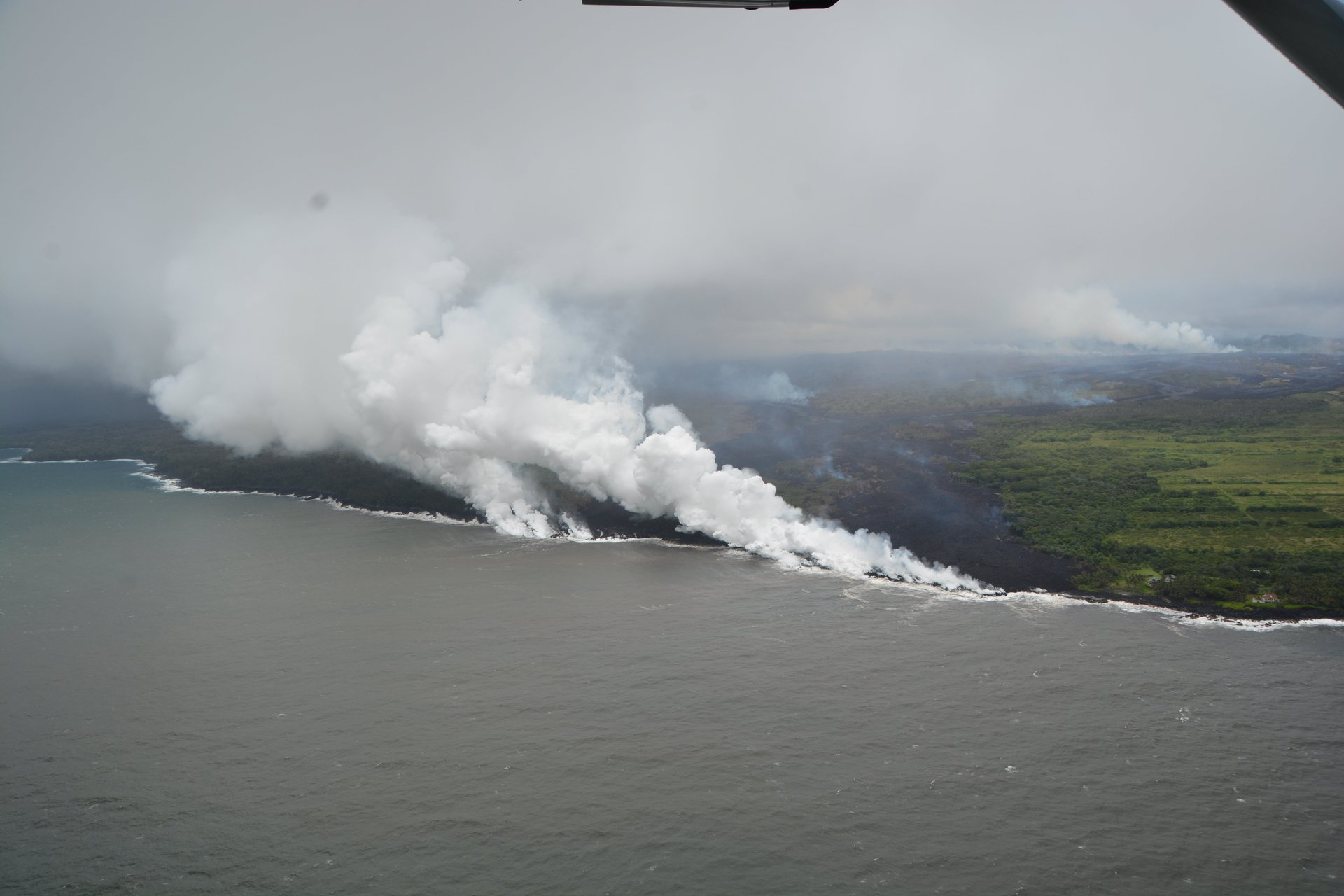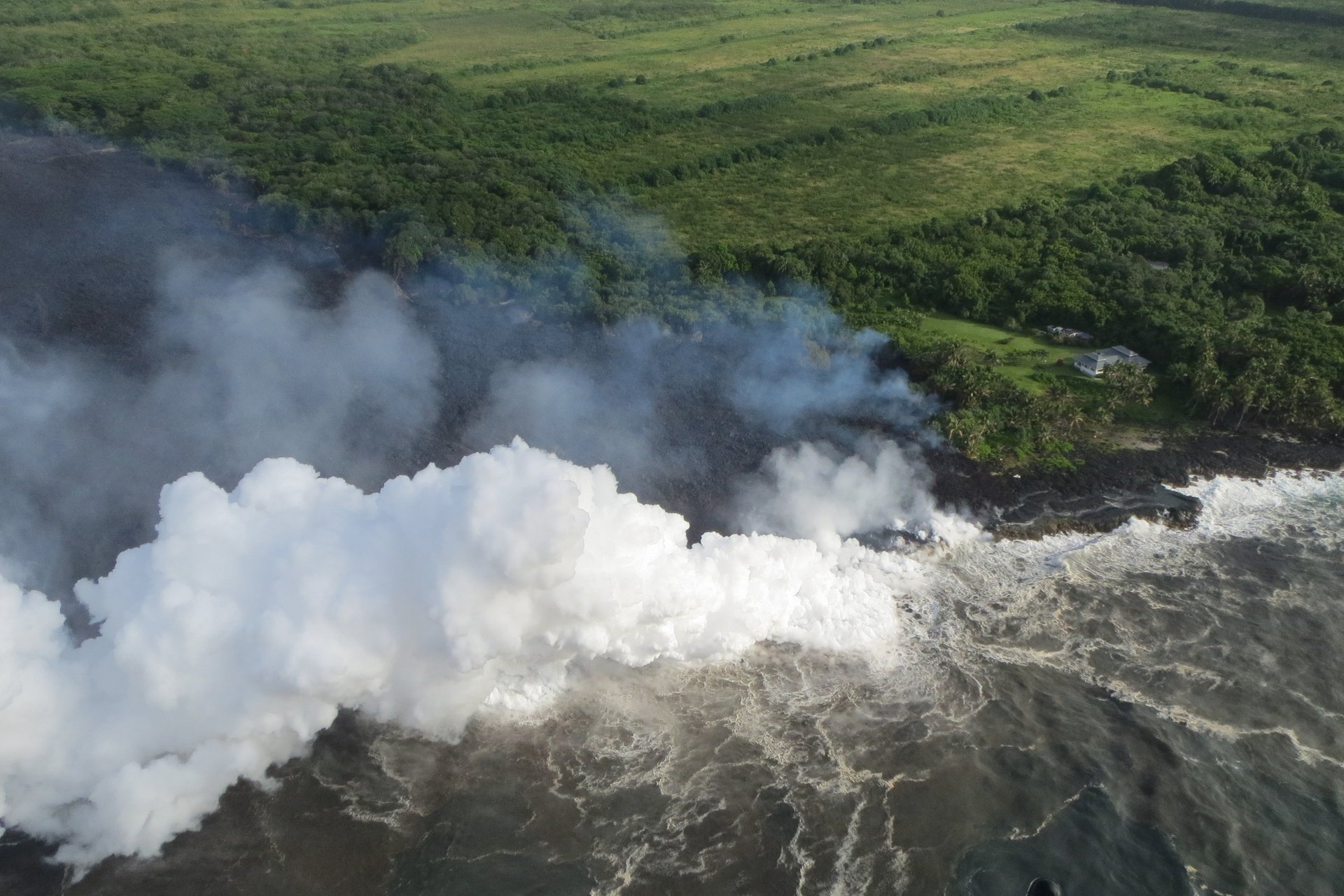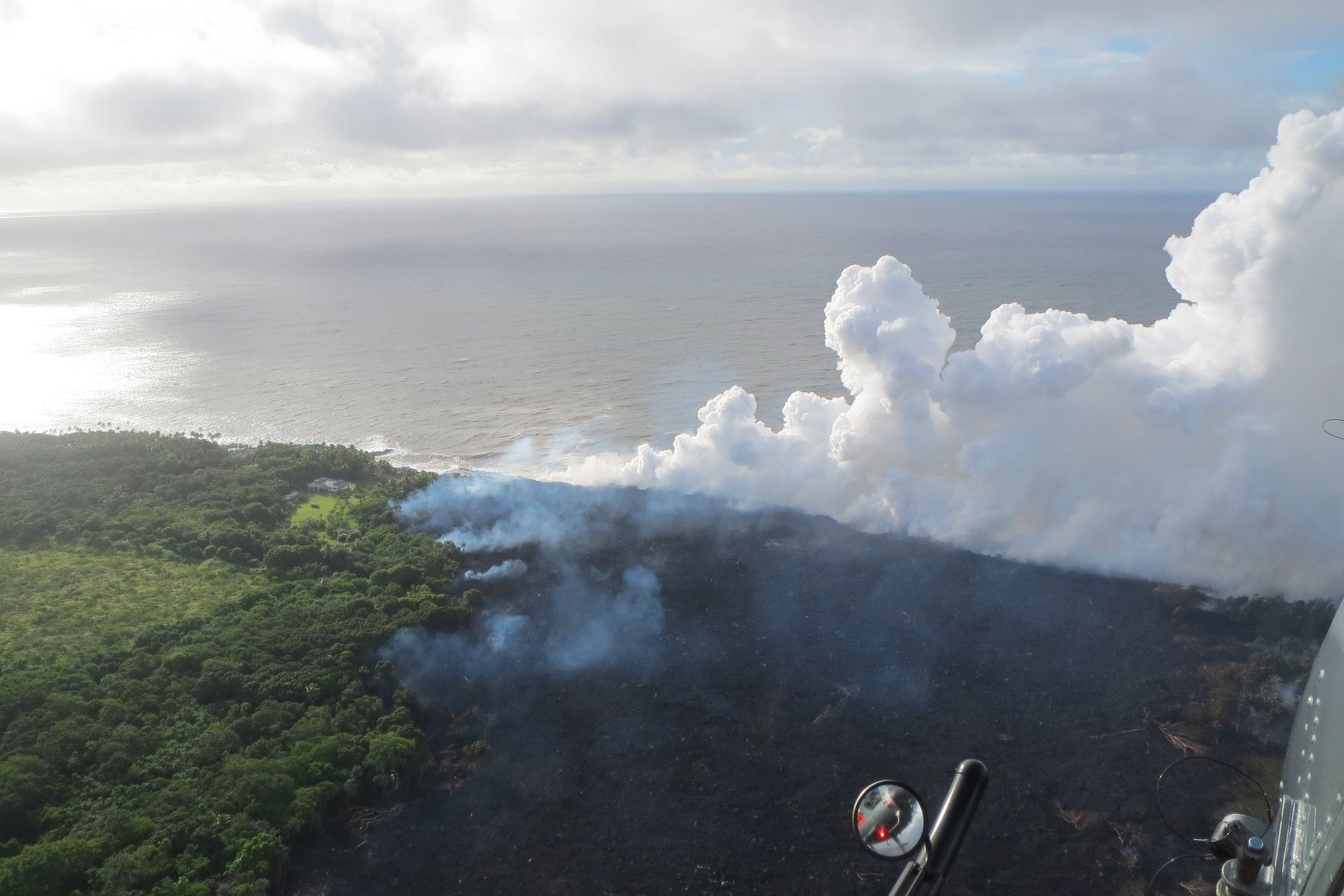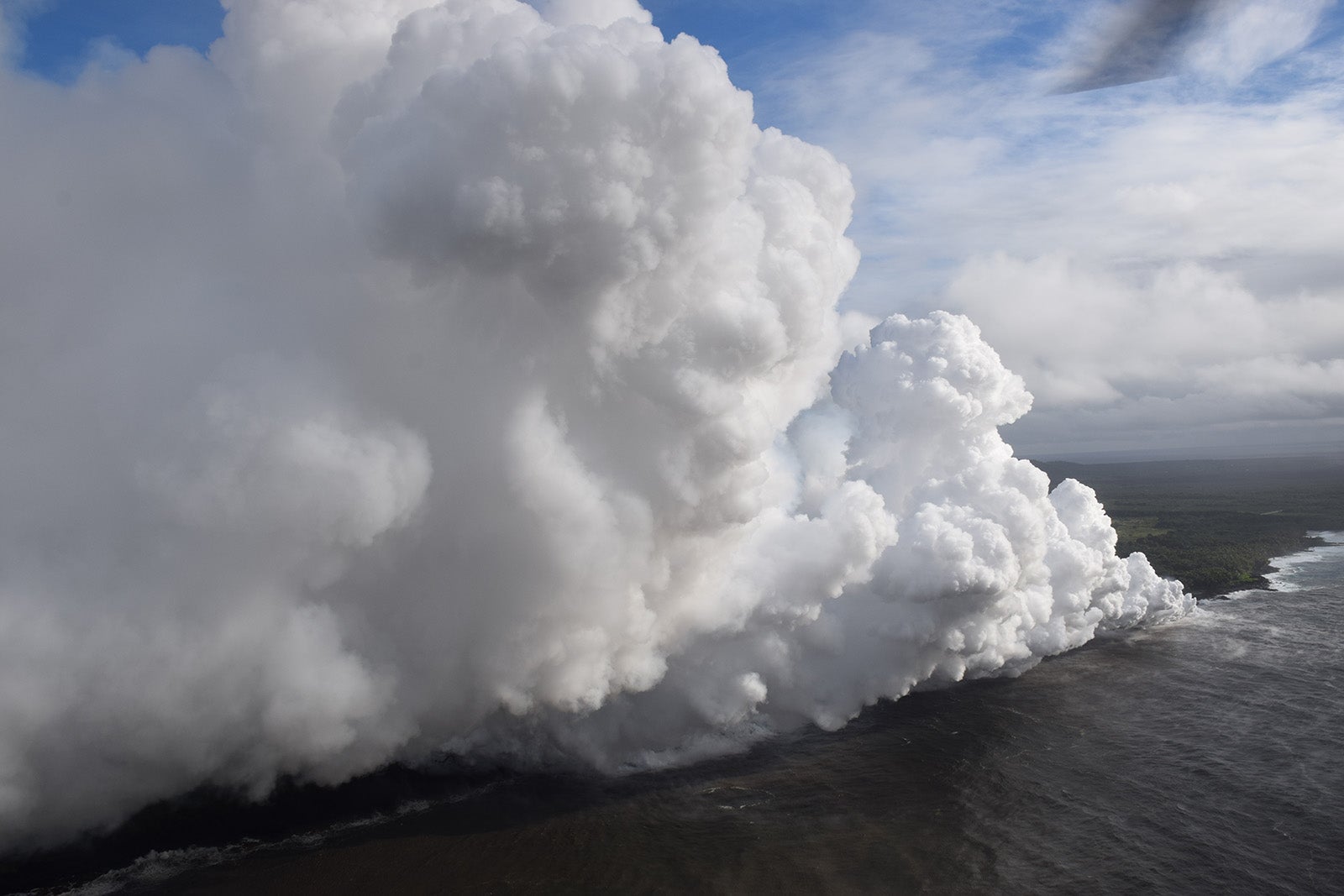The health risks hidden in these photos of lava flowing into the ocean
Lava flow from Hawaii’s Kilauea volcano reached the Pacific Ocean on Sunday (May 20), resulting in billowing white clouds as the molten rock interacted with water. Unfortunately, lava quickly cooling in water creates a byproduct known as “laze,” a combination of lava and haze. The puffy clouds lifting up from the ocean are actually filled with toxic gases and small pieces of volcanic glass.
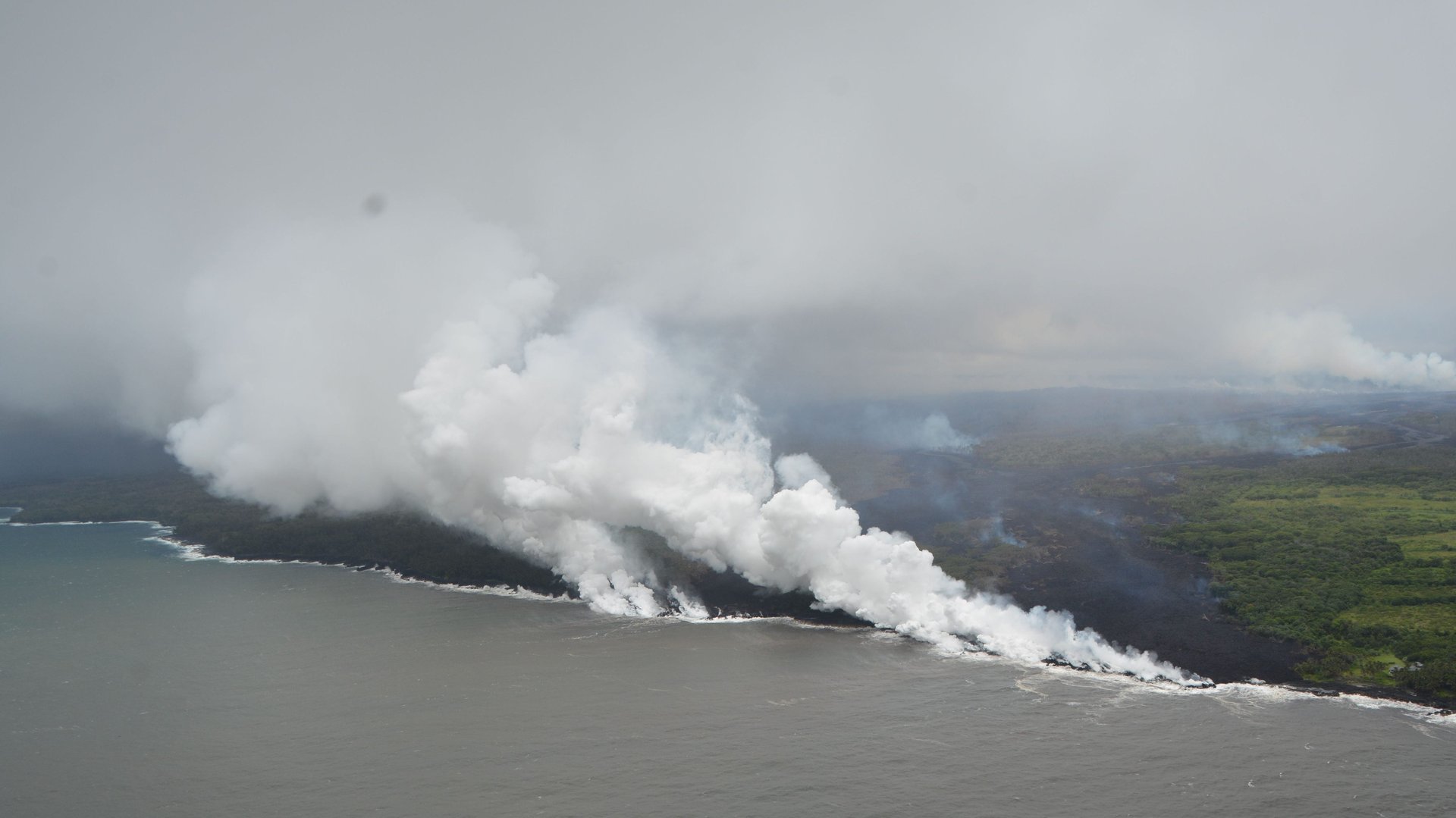

Lava flow from Hawaii’s Kilauea volcano reached the Pacific Ocean on Sunday (May 20), resulting in billowing white clouds as the molten rock interacted with water. Unfortunately, lava quickly cooling in water creates a byproduct known as “laze,” a combination of lava and haze. The puffy clouds lifting up from the ocean are actually filled with toxic gases and small pieces of volcanic glass.
Reuters reported that most of the potentially lethal fumes have been confined to coastal areas or blown out to sea. But a shift in wind direction could bring the laze toward population centers. Two people died after laze inhalation from a lava flow in Hawaii in 2000; over the weekend, a man had his leg shattered after being hit by lava spatter from Kilauea explosions.
These images shared by the US Geological Survey show the entry point for the lava flowing into the ocean. As of Sunday, the area stretched for about 1 kilometer.
